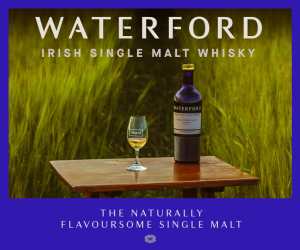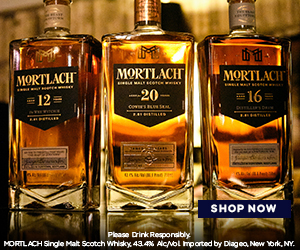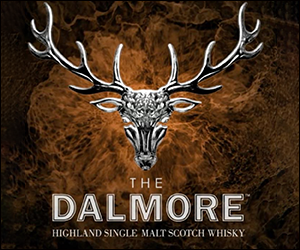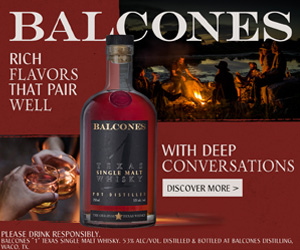Stories
Whisky is a passion to explore. From the history of the spirit to the evolution of the industry, the story of whisky helps fuel that passion. Often, it’s easy to forget that whisky is also a global multibillion dollar industry. The stories of whisky — from news and new releases to in-depth inquires and what goes on behind the label — blend together to help us appreciate the spirit of whisky.
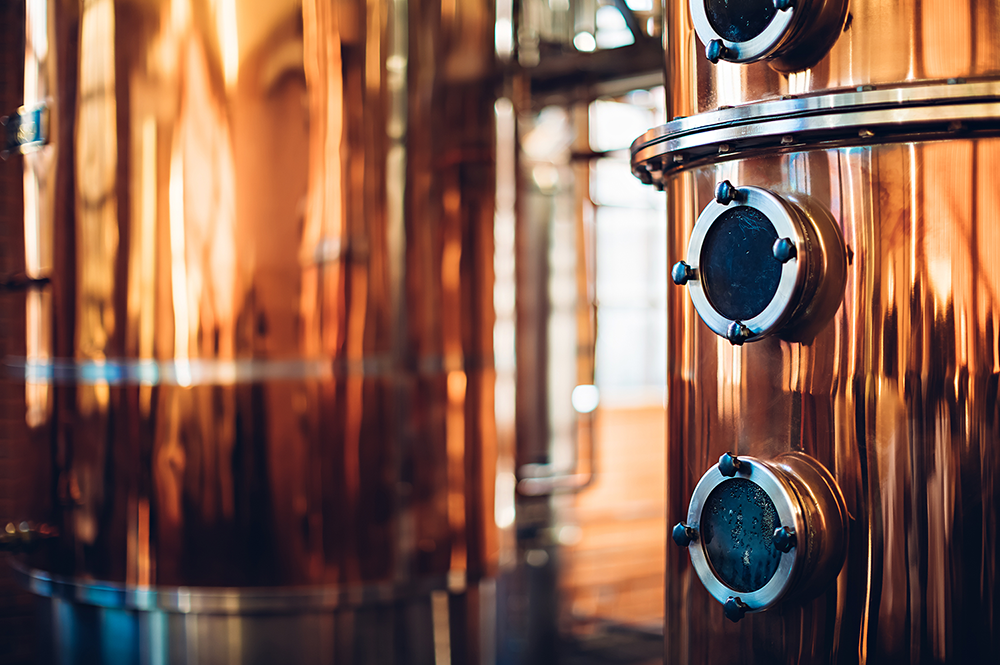
Making the Numbers Add Up for Craft Distillers
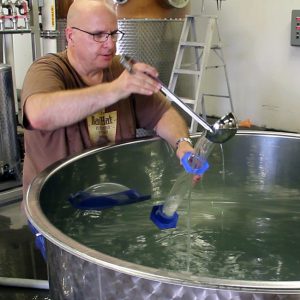 December 19, 2017 – The stories of friends deciding to open their own distilleries are almost legendary. For John Cooper and Herman Mihalich of Dad’s Hat Rye in Pennsylvania, it was old college friends bonding over homemade beers and talking about Herman’s family history in distilling. Tuthilltown Spirits founders Ralph Erenzo and Brian Lee originally planned a rock climbing facility at their farm in update New York, but after local officials rejected that idea, they decided to turn one of the gristmills at the farm into a microdistillery. At Sweden’s Mackmyra Distillery, it was friends having a few drams in a hot tub after a day of skiing.
December 19, 2017 – The stories of friends deciding to open their own distilleries are almost legendary. For John Cooper and Herman Mihalich of Dad’s Hat Rye in Pennsylvania, it was old college friends bonding over homemade beers and talking about Herman’s family history in distilling. Tuthilltown Spirits founders Ralph Erenzo and Brian Lee originally planned a rock climbing facility at their farm in update New York, but after local officials rejected that idea, they decided to turn one of the gristmills at the farm into a microdistillery. At Sweden’s Mackmyra Distillery, it was friends having a few drams in a hot tub after a day of skiing.
There are nearly 1,600 craft distillers in the U.S., according to the American Craft Spirits Association, with more being licensed each month. The ACSA’s most recent economic impact report shows craft distillers accounted for $3 billion in retail sales during 2016 with annual growth of 25 percent each year, and it’s now common to find “craft” whiskies alongside the industry’s biggest names at many U.S. retailers today, along with a growing export market. Craft distillers have also been credited with helping persuade state lawmakers to open up opportunities for “artisan” distilling on a scale not seen since the end of Prohibition. The phenomenon is not limited to the U.S., though, with small-scale whisky distilleries popping up all over the world.
Defining a “craft distiller,” however, is something akin to former Supreme Court Justice Potter Stewart’s famous 1964 opinion in an obscenity case: “I know it when I see it.” There is no official definition for a “craft distiller,” and the two main groups representing small-scale distillers have different standards. The ACSA limits voting membership to “independent, licensed distillers annually removing fewer than 750,000 proof gallons from bond (the amount on which federal excise tax is paid).” On the other hand, the American Distilling Institute’s certification standards limit the term “craft distiller” to those with annual sales of less than 100,000 proof gallons and less than 25 percent ownership by other alcoholic beverage industry members. A number of states have set their own definitions, usually based on annual production and mandating that a certain percentage of grain and other raw materials come from within the state.
However, meeting the standards for federal and state distillery licenses is just the beginning, and the “peer to peer” forum on ADI’s web site is full of ads from distillers looking to sell off stills and other equipment. That’s because there’s a jungle full of potential pitfalls that small-scale distillers face on their road to profitability, along with a mountain of paperwork. Smooth Ambler Distillery co-founder John Little cited that paperwork as one of the reasons he and his investors decided to sell the West Virginia distillery to Pernod Ricard last December, since it gave them access to the industry giant’s resources in compliance, human resources, and other areas that distracted them from distilling on a daily basis.
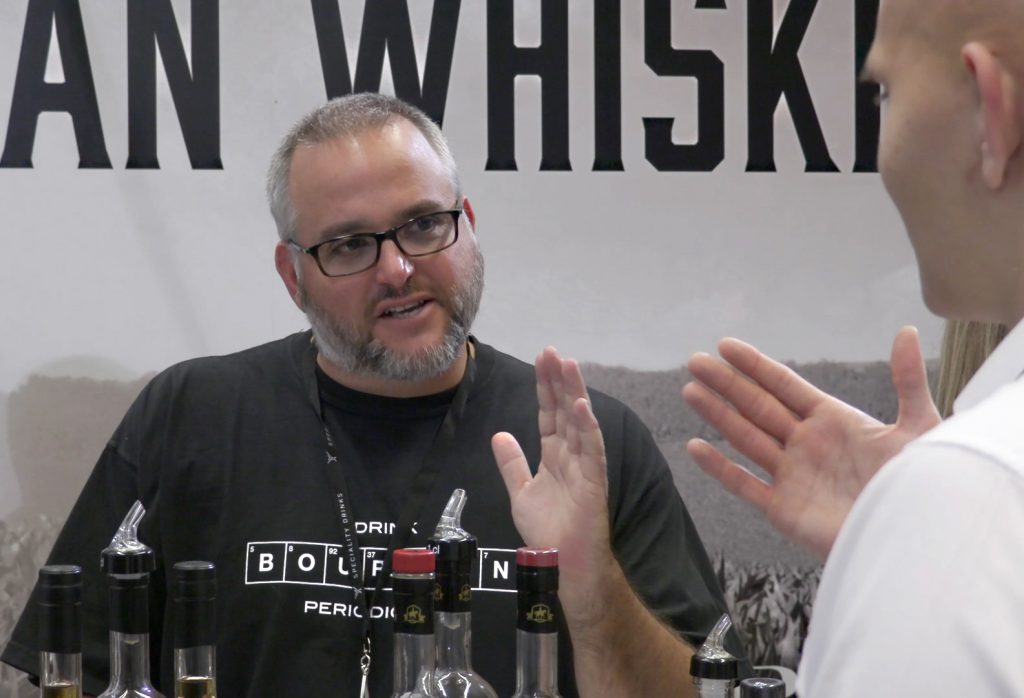 “They have so many resources in all those areas that it actually enables us to be better distillers and run our business more efficiently, and that’s the part that really excites me as a small business owner,” said Little, who stayed on to run Smooth Ambler as a subsidiary within Pernod Ricard USA’s NBV Investments venture capital unit. Little and other craft distillers have been open with us in the past about a few of those pitfalls, and if you sit around the hotel bar at a craft distilling conference, you’re likely to overhear tales of woe ranging from malfunctioning stills to problems with distribution. When it comes to money, though, they’re likely to clam up. That’s because most small-scale distilleries are set up as privately-held corporations with little or no disclosure requirements, making their financial records are as much of a secret as their mashbills – or in some cases, the actual source of their whiskies.
“They have so many resources in all those areas that it actually enables us to be better distillers and run our business more efficiently, and that’s the part that really excites me as a small business owner,” said Little, who stayed on to run Smooth Ambler as a subsidiary within Pernod Ricard USA’s NBV Investments venture capital unit. Little and other craft distillers have been open with us in the past about a few of those pitfalls, and if you sit around the hotel bar at a craft distilling conference, you’re likely to overhear tales of woe ranging from malfunctioning stills to problems with distribution. When it comes to money, though, they’re likely to clam up. That’s because most small-scale distilleries are set up as privately-held corporations with little or no disclosure requirements, making their financial records are as much of a secret as their mashbills – or in some cases, the actual source of their whiskies.
Making the transition from a “craft distiller” to a larger player in the whisky industry is more difficult, though, and there are three ways of doing it. One can sell the business to one of the industry’s giants, as Little did. One can find private investors to buy a large share of the company, though that often comes with a loss of control over the business – as Balcones Distilling founder Chip Tate found when his majority shareholders forced him out of the company following a very public series of disputes in 2014. Tate took the money from his buyout and founded the Tate & Company distillery in Waco, Texas, and as he told WhiskyCast in a December 2014, put his name on it to “avoid any confusion in the future about who’s going to be working there for a long time.”
The third option is to bypass private investors and “go public” by offering shares of the company on the stock market. As of now, Portland, Oregon-based Eastside Distilling is the only small-scale distiller with shares trading publicly on NASDAQ (ticker symbol EAST), and just like every other publicly-traded company in the U.S., must file regular disclosure reports with the Securities and Exchange Commission.
“That’s the advantage of being a public company, and it’s also the disadvantage,” says Eastside CEO Grover Wickersham. “The advantage is that anyone can step up and buy our stock – they just have to call their broker (and) place the order, and anyone can sell our stock – they just have to follow the same process.” Wickersham, a longtime investor and portfolio advisor with past experience in taking small companies public, is also a former SEC staff attorney and branch chief, giving him a view from both sides of the regulatory picture.
“We have liquidity for our shareholders, but the price we pay for that is that we have to comply with the U.S. Government rules for public disclosure – we have to have audited financial statements, we have to file audited quarterly reports, we have to file interim reports when there’s (a) material development, and that’s something obviously a private company doesn’t have to do,” he said in a telephone interview. For instance, Eastside filed a routine “Form 8-K” disclosure in September of 2016 after master distiller Melissa Heim told a local TV station that the distillery had just shipped its single largest order ever to a distributor on the East Coast. That news had not been previously been disclosed to the markets or in a news release, and it’s the kind of thing a privately-held craft distiller would be able to brag about at will without going to the hassle of filing a report with the SEC.
Eastside Distilling was founded in 2008, and has been a publicly-traded company since 2014, when founder Lenny Gotter and company president Steven Earles worked out a deal to go public by acquiring a small publicly-traded interactive media company and merging Eastside into it. After a series of private stock placements with investors following the transition, Gotter left Eastside in September of 2016, followed by Earles two months later. Since then, Eastside has been active in the acquisition market under Wickersham’s leadership. In May, Eastside bought Oregon’s Big Bottom Distilling from founder Ted Pappas with plans to run it as a standalone unit while incorporating its spirits into Eastside’s distribution system. In March, Eastside bought Portland’s MotherLode Craft Distillery, which provided both distilling and bottling services for other craft distillers in the Pacific Northwest, and is integrating its operations into Eastside’s own distillery in Portland. In both deals, Eastside completed the acquisition with shares of the company’s stock instead of an all-cash deal, giving the sellers the flexibility to divest their shares at will or acquire new ones while becoming part of the Eastside team.
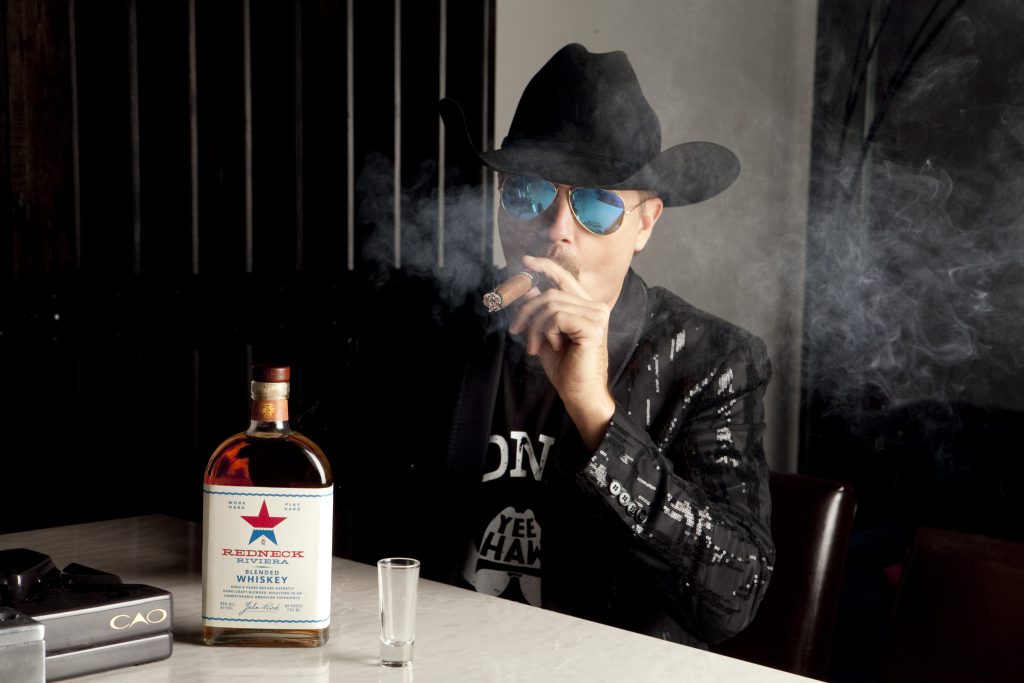 Last month, the company announced a joint venture with country music star John Rich to create a series of spirits to be sold under Rich’s “Redneck Riviera” lifestyle brand, and Eastside will open an office in Nashville, Tennessee to handle sales and marketing for the brand. According to Wickersham, the venture is unlike other celebrity-linked spirits brands in that Rich is an equity partner with Eastside and not merely collecting a licensing fee for his brand.
Last month, the company announced a joint venture with country music star John Rich to create a series of spirits to be sold under Rich’s “Redneck Riviera” lifestyle brand, and Eastside will open an office in Nashville, Tennessee to handle sales and marketing for the brand. According to Wickersham, the venture is unlike other celebrity-linked spirits brands in that Rich is an equity partner with Eastside and not merely collecting a licensing fee for his brand.
“John Rich is an amazing, amazing guy and we’re really excited to be hooked up with him,” Wickersham said. “He’s personally going to go out and meet the major customers … he’s very committed to working really, really closely with the distributors, he’s gonna go on the road – fire up his bus – we’ll pay the diesel, but he’s going to be doing ten-city tours, he’s going to be absolutely 100 percent invested in seeing that brand succeed.”
“A few years ago, I started really putting that brand out around America, with footwear, with live nightclubs…got one in Vegas and one opening in Nashville,” Rich told Portland’s KGW-TV in an interview last week. “It was time to do a whiskey, and some of the greatest whiskey makers in the world live right here in Portland … so about seven months of back and forth from Portland to Nashville, they came to my house, I’m out here now, and we went back and forth and came up with this final blend,” Rich said. Eastside’s Travis Schoney (a distant relative of John Rich) created the Redneck Riviera whiskey, which will debut initially in the Southeastern U.S. over the winter. According to Wickersham, Eastside will disclose some terms of the agreement with Rich in its fourth-quarter earnings report to the SEC, but has filed a request for permission to redact some specifics of the deal as proprietary information.
Last July, Eastside filed with the SEC to raise $6.9 million in capital by selling additional shares to investors. In what’s known as an “S-1 form” at the SEC and a prospectus to potential investors, Eastside’s owners outlined their growth strategy for the future along with the potential risks they face, as required by federal law. The list of risk factors appears to be daunting at first glance, and covers a wide range of possibilities from relationships with distributors and suppliers to a history of operating losses and the potential need for additional capital in the future. The offering was also part of Eastside’s transition from trading on the “over-the-counter” market to the much larger NASDAQ exchange, which has a stricter set of standards for companies to be listed.
“I don’t think anybody who’s in the craft distilling business would be surprised by any of the risks that we disclose,” Wickersham said, while pointing out that getting an accurate picture of Eastside’s finances requires a more detailed analysis than what is shown in its S-1 form. “I think anybody looking at our current balance sheet thinks we’re pretty strong … we’re pushing $10 million in equity … our last report was $4 million in cash, we have at cost a couple of million in bulk spirits, which everyone in the business knows for the most part are going up in value, and most of our debt is long-term debt … we don’t have an excessive amount of trade debt, so actually, I think we’re in pretty good shape,” he said. “We’re only at a $20 million market cap, so if we knock it out of the park, I think there’s a real upside … and we have a lot of shots on goal, to mix our sports metaphors, we have a lot of shots on goal with our different products.”
Listen to Mark Gillespie’s interview with Grover Wickersham:
One of the major ongoing expenses Eastside has faced is the need to invest in building up its brands as it expands distribution outside of its home market in Oregon. Earlier this year, the company teamed up with Sandstrom Partners, a branding and design firm based in Portland that has done extensive design work with Diageo’s Bulleit Bourbon and other major spirits brands, while adding Sandstrom president Jack Peterson to its board of directors. Their first project was a re-branding of Eastside’s Burnside line of whiskies that debuted in October with new packaging to go along with a complete re-working of the whiskies themselves led by the team of master distillers Melissa Heim and Travis Schoney. While Sandstrom accepted a combination of cash and Eastside shares in its compensation package, Wickersham called it a strategic investment in the company’s future. “Most people in the business realize that you do have to spend a lot of money to develop brands, but when you have a payday when you sell the brand if you’re successful, then the paydays can be very large,” he said noting this year’s acquisition of Casamigos Tequila by Diageo from founders George Clooney and Rande Gerber for $700 million in cash and up to $300 million in performance-based incentives.
However, it must be noted that doing deals and raising capital isn’t as simple as issuing more shares of stock. Keep in mind that every time a company issues new shares of stock, that dilutes the value of the shares held by current investors. While Eastside is too small to sell bonds – essentially borrowing money from investors – on the publicly-traded bond market, the company has been able to sell bonds to institutional and private investors on three-year terms for around six percent interest.
That’s a lot more attractive than financing a distillery startup on one’s personal credit cards, as more than one distiller has done. Rachel Gardner and Pia Carusone didn’t quite resort to that when they founded Republic Restoratives Distillery in Washington, DC, but as Gardner said in an interview, they made almost every possible mistake when they started.
“Unfortunately, most banks don’t see whiskey in a barrel with its accruing value as something that is really a commodity that you can monetize and collateralize, so early on, we got a little big for our britches, I suppose … went to banks and said ‘hey, we need two million dollars,’ and they’d say ‘that’s hilarious … come back when you’ve made ten million dollars.” They eventually funded the distillery with a successful crowdfunding campaign supported by nearly 600 individual donors, and were able to take that success and persuade several small venture capital investors to come on board with startup funding.
“Just like everybody else, we’re going bill to bill, and we’re just hoping to keep the lights on,” Gardner laughs.
Editor’s note: This is an updated version of a story published in July that was withdrawn because we felt it did not meet our own editorial standards. At the time, Eastside Distilling was in the middle of a required “quiet period” during its July stock offering, and was prohibited by federal regulations from publicly discussing its finances or responding to our request for an interview. For that reason, we were not able to include the company’s explanation of its potential risk factors or other mitigating information. We would also like to note that the audio interview with Grover Wickersham included with this story is the complete interview, with only minor edits that did not affect the editorial integrity of the interview. In addition, this story was also updated to reflect the change in Eastside Distilling’s ticker symbol to EAST as of January 4, 2018, and that EAST began trading in 2017 on the NASDAQ exchange instead of the “over-the-counter” market.
Links: American Craft Spirits Association | American Distilling Institute | Smooth Ambler | Eastside Distilling | Sandstrom Partners | Republic Restoratives




